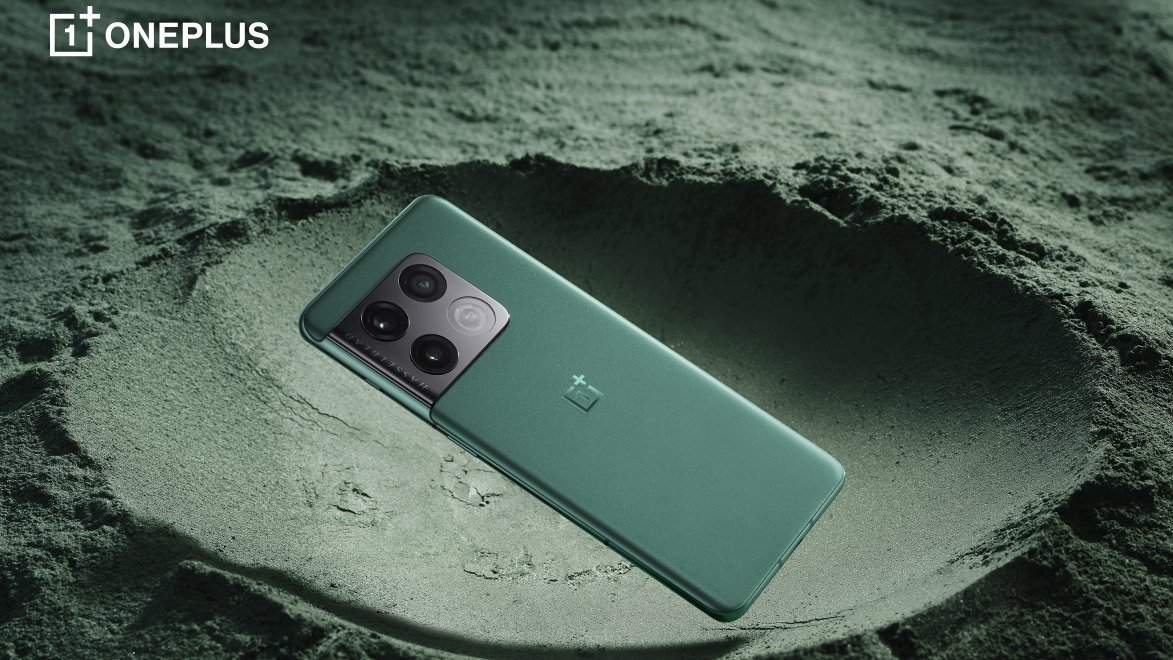After months of leaks and weeks of drip-fed information, the OnePlus 10 Pro has finally been fully unveiled, and we now know most of the details that were lacking in the previous info dumps.
That said, this launch is just for China, meaning there are still some key questions regarding the release date and price elsewhere, but we’ve included what we know and what we expect below.
For everything else though, from the design and display, to the cameras, battery and beyond, we now know almost everything, and you’ll find all the details in this article.
Cut to the chase
- What is it? The latest flagship OnePlus phone
- When is it out? It's already launched in China, likely soon elsewhere
- How much will it cost? Unclear, but expect a premium price
OnePlus 10 Pro release date and price
The OnePlus 10 Pro was unveiled in a China-only launch on January 11, 2022, and the company has confirmed that the phone will launch globally later in the year.
Annoyingly they haven’t got any more specific than that, but we wouldn’t think the wait will be too long, especially as the OnePlus 9 Pro landed in March 2021, and indeed leaks suggest that the OnePlus 10 Pro will get its global launch in either March or April.
Note however that this global launch won’t include Australia, as OnePlus doesn’t sell its phones there. We fully expect to get the OnePlus 10 Pro in both the US and the UK though, especially as the company has specifically said it’s coming to North America, Europe and India.
As for the price, it’s anyone’s guess there currently, but for reference the OnePlus 9 Pro started at £829 (about $969, AU$1,250) – with the US only getting a pricier model with 12GB of RAM for $1,069 / £929 (around AU$1,400).

Design
OnePlus revealed the design of the OnePlus 10 Pro ahead of time, so if you’ve been keeping up to date with this phone then there won’t be much new to learn here.
The OnePlus 10 Pro comes in just two colors – a choice of Volcanic Black or Emerald Forest, the latter being a green shade. Each incorporates micro-crystals, giving the rear a slightly more textured look.
A highlight of the design is the metal camera block, which merges with the frame and is a different color to the rest of the back (black in both cases, but a glossier black than the rest of the Volcanic Black model).
The aluminum frame meanwhile is either green or black, depending on which model you go for, but with a metallic sheen not found on the bulk of the rear.
The OnePlus 10 Pro comes in at 163 x 73.9 x 8.55mm, and OnePlus hasn’t said how much the phone weighs, but has said weight distribution leaves it feeling perfectly balanced in the hand.
Finally, OnePlus has mentioned that the phones uses tough Gorilla Glass Victus (which is the latest generation of Corning’s smartphone protection), though it’s not clear whether this is used on the front, the back, or both.

Display
The OnePlus 10 Pro has a 6.7-inch QHD+ display with a 120Hz refresh rate. It also uses second-generation LTPO technology, which OnePlus claims allows it to move between 1Hz and 120Hz faster than on the OnePlus 9 Pro, leading to less power consumption.
Additionally, the screen has an industry-first in its use of Dual Color Calibration. This means that the display has been calibrated to deliver accurate colors whether viewed at high or low brightness, making for more consistently high-quality visuals.
Camera
There’s a lot going on with the cameras on the OnePlus 10 Pro, but in short it has a 48MP main camera, a 50MP ultra-wide one (with an extra-wide 150-degree field-of-view), and an 8MP telephoto one, along with a 32MP snapper on the front.
Looking closer, all three rear cameras are able to shoot in 10-bit color, which basically means it can capture a greater range of colors than most smartphone cameras.
The OnePlus 10 Pro also includes some new and improved shooting modes, including a new Fisheye mode with the ultra-wide lens, and a new Master Style mode, which lets you select between three different color styles (Serenity, Radiance or Emerald), which have been calibrated by pro photographers.

Each style is suited to a different type of shot, with Serenity being good for portraits, Radiance for hyperreality, and Emerald for landscape shots.
Additionally, OnePlus has also improved the Hasselblad Pro Mode this year, adding support for 12-bit RAW capture across all three rear lenses. There’s also a new RAW+ mode which lets you shoot in 12-bit RAW while retaining the brand’s computational photography elements – so you should get pictures that look polished out of the camera, but are still fully editable. It sounds a lot like Apple’s ProRAW format.
Finally, there’s a Movie Mode, which lets you adjust the white balance, ISO, and shutter speed both before and during filming. You can also shoot in a LOG format without a pre-set picture profile, if you want.
Battery
The battery in the OnePlus 10 Pro is a big upgrade, as not only is it 5,000mAh (up from 4,500mAh in the OnePlus 9 Pro), it also supports 80W fast charging (up from 65W in the OnePlus 9 Pro).
That allows it to charge from 1-100% in just 32 minutes, and if you’d rather use wireless charging you can do that at 50W, getting the phone from 1-100% in 47 minutes. Though notably the wireless charging power hasn’t improved from last year’s phone.
Also, the OnePlus 10 Pro comes with an 80W charger in the box, so you won’t have to buy one separately.
Specs and features
The OnePlus 10 Pro has a top-end Snapdragon 8 Gen 1 chipset (which is likely to be the main high-end Android chipset for 2022), coupled with up to 12GB of RAM.
There’s also up to 256GB of storage, and the phone runs Android 12 (overlaid with the company’s OxygenOS 12). Or at least it will use that in most regions – in China it’s instead overlaid with ColorOS 12.1.
The phone also supports 5G of course, and it has a dual SIM card slot.
- Will this rank among the best smartphones?
TechRadar - All the latest technology news https://ift.tt/33pwaiZ
Comments
Post a Comment